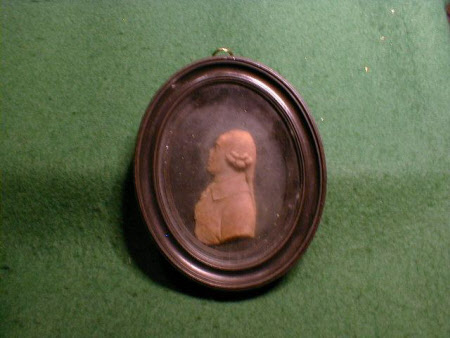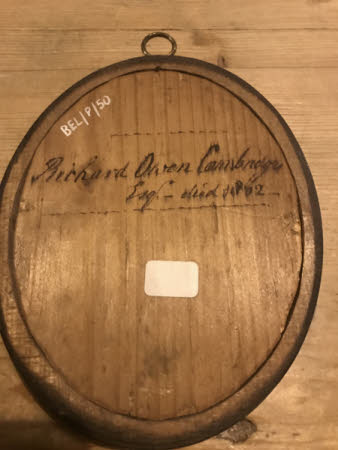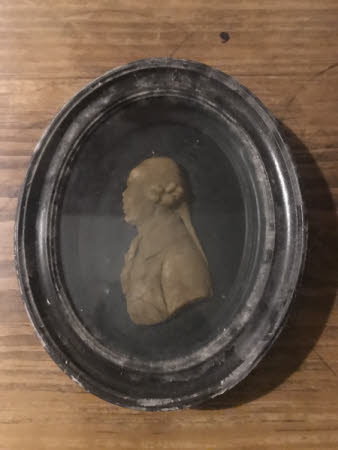Richard Owen Cambridge
Category
Art / Sculpture
Date
1801 - 1850
Materials
Wax on mahogany
Measurements
30 x 130 x 155 mm
Place of origin
Great Britain
Order this imageCollection
Belton House, Lincolnshire
NT 435986
Summary
Wax, portrait relief medallion in mahogany oval frame, Richard Owen Cambridge, early to mid 19th century. A relief portrait bust of the British poet Richard Owen Cambridge (1717-1802) shown in profile, looking to the left, in pink wax and an oval wooden frame.
Full description
The portrait is derived from an original drawing by Ozias Humphry (1742-1810) which was engraved and published as a plate illustration to John Murray’s 1835 edition of The Life of Samuel Johnson, LL.D (pp.308-9). See British Museum, London, 1920,1211.341 and Ozias Humphry’s earlier portrait miniature of Cambridge, engraved and published in 1803 as the frontispiece to The Works of Richard Owen Cambridge, British Museum, London, 1870,0514.1810. Wax was used for portrait miniatures in the 18th and 19th centuries. Wax portraits were either sculpted in relief, as in the present example, or in bust form; they could be in cream wax, or tinted, usually in pink, or polychrome. Many sculptors who specialised in wax were itinerant artists, who would visit country houses to take likenesses. Although a much cheaper form of portraiture than a large bust in marble, wax portraits were extremely popular amongst the nobility and royalty. Their appeal lay in the incredible verisimilitude that could be achieved, as well as the speed with which a portrait could be produced. A wax portrait was initially modelled in a soft wax and was then cast in a harder wax and finished by hand. It could also be cast a number of times, enabling those commissioning a portrait to have multiple versions to give to friends and family. Alice Rylance-Watson October 2018
Provenance
Purchased with a grant from the National Heritage Memorial Fund (NHMF) from Edward John Peregrine Cust, 7th Baron Brownlow, C. St J. (b.1936) in 1984.
Credit line
Belton House, The Brownlow Collection (acquired with the help of the National Heritage Memorial Fund by the National Trust in 1994)


